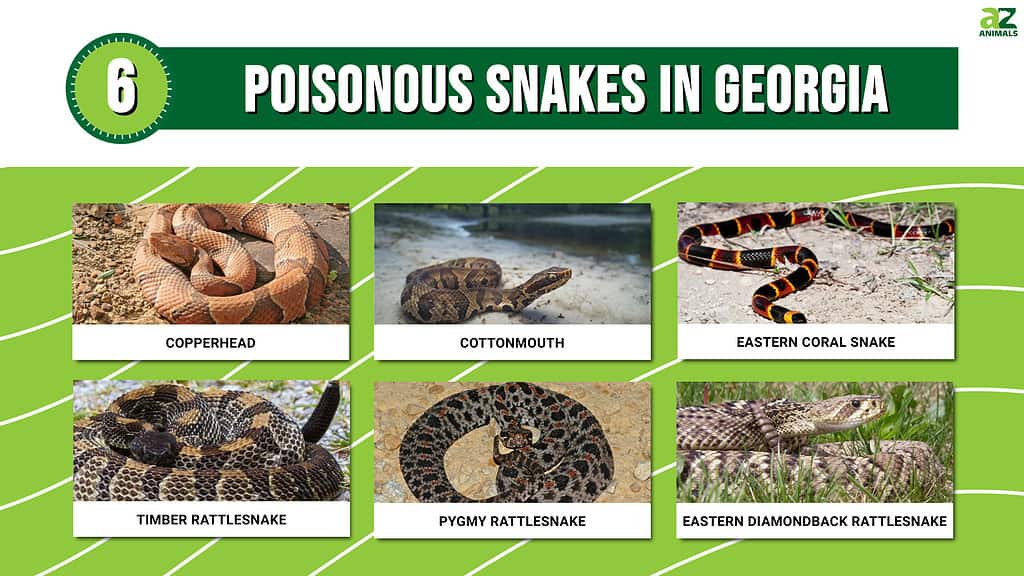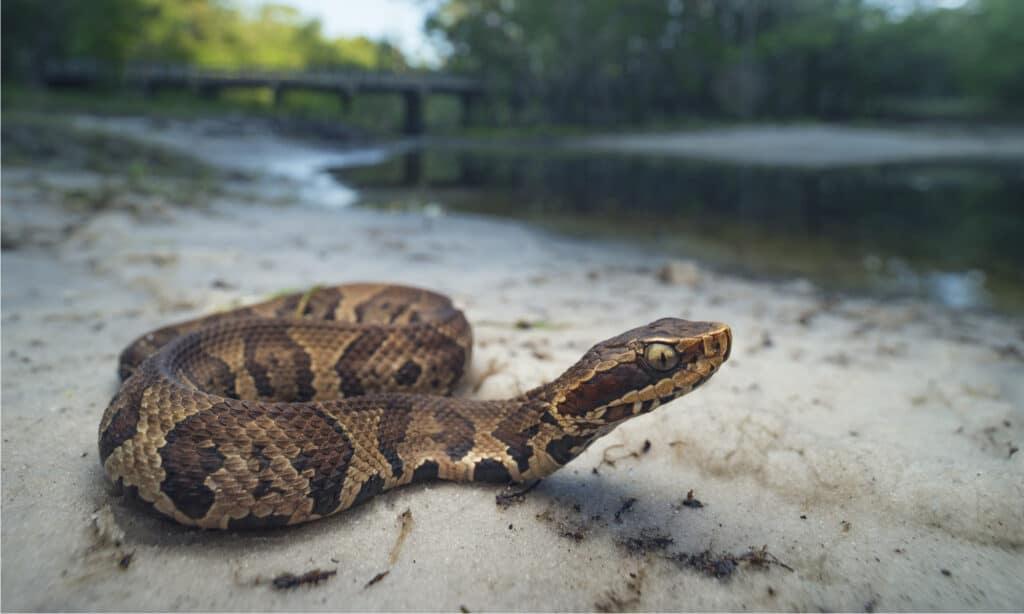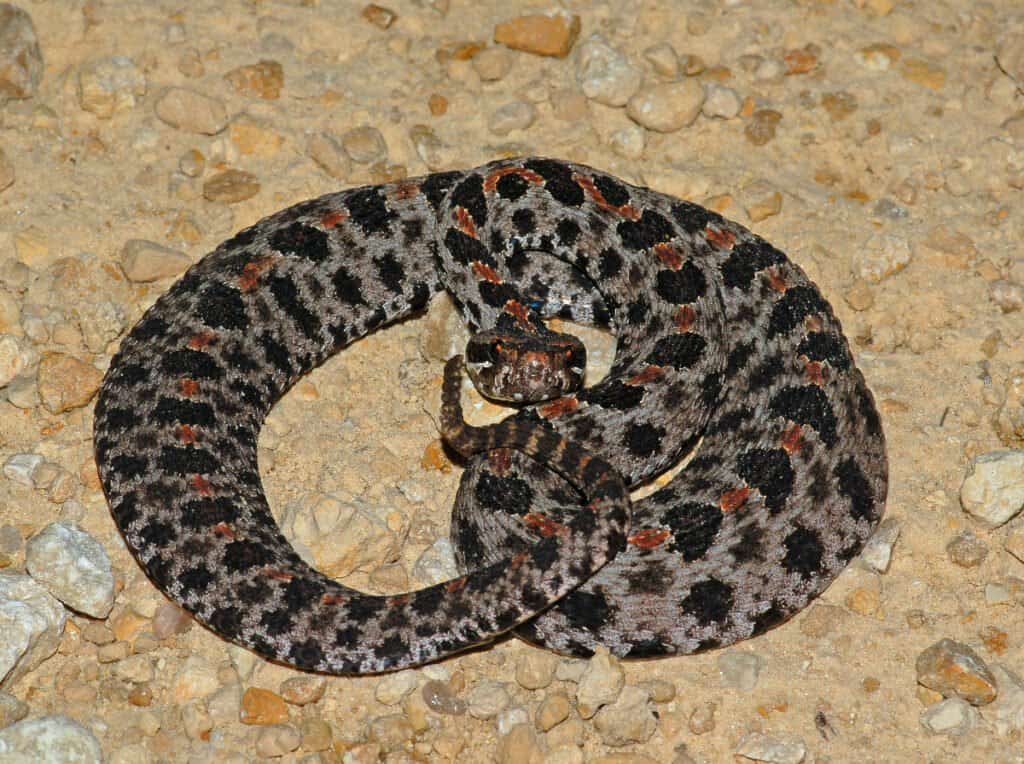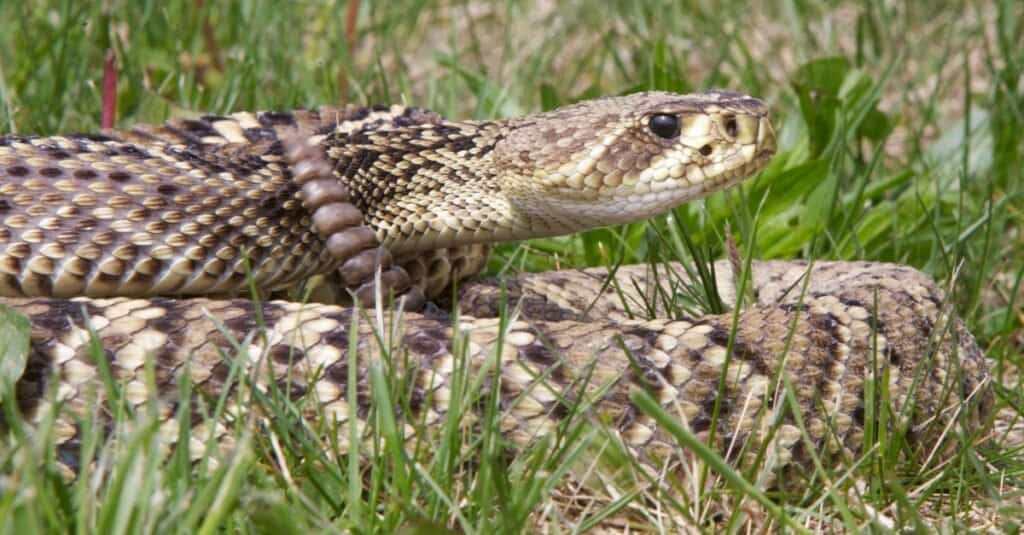If you live in the U.S state of Georgia, snakes wouldn’t be an uncommon sight. Snakes can be found all around Georgia, including in cities and suburbs and they are expected to become more prevalent as development and population grow. With 46 snake species, Georgia has one of the largest diversity of snakes in the United States. Snakes can be found all along the Atlantic coast, from the mountains to the barrier islands. The state’s diverse snake species make it a great place to observe and learn about snakes. However, of all these 46 snakes found in the state, 6 of them are venomous.
Remember: Snakebites are not poisonous but are venomous. If a snake bites a person and they die, the snake is venomous and if a person eats a snake and dies, the snake is poisonous.
Most snake species in the state are not threatening or dangerous to humans. However, several specific snakes can leave grave damage during human attacks. Snakes are economically helpful because they devour rats, mice, and other pests. So, which snakes do you need to watch out for? This article will list the 6 venomous snakes in Georgia and how dangerous they can be.

6 Venomous Snakes in Georgia
- Copperhead
- Cottonmouth
- Eastern Coral Snake
- Timber Rattlesnake
- Pygmy Rattlesnake
- Eastern Diamondback Rattlesnake
Copperhead

The copperhead is highly venomous.
©Creeping Things/Shutterstock.com
Copperheads are generally known to be one of the deadliest snakes in the world. They are highly venomous, so you need to watch out for these snakes. These snakes are pretty easy to spot and identify because of their distinctive reddish head color. Endemic to North America, the copperhead is a pit viper that has been accountable for a huge portion of venomous snake bites and some fatalities across the globe and throughout the years.
In Georgia, copperheads are the most prevalent venomous snakes. They can be found in forested regions across most South Carolina and Georgia, but their environmental preferences vary. Copperheads can only grow up to 36 inches (90 cm) in length, which isn’t frightening. They do, however, have venom that should make you think twice about touching or handling one.
Copperheads, along with cottonmouths (water moccasins) and rattlesnakes, are among the most feared snakes, as they are considered to be highly venomous and dangerous. Copperheads aren’t known for being particularly aggressive. When threatened or provoked, though, they will bite. Their venom glands and sharp fangs release and transmit hemolytic venom, which causes red blood cells to break down. Although the venom of the copperhead is not the most toxic of all snakes, it can nevertheless inflict severe symptoms similar to that of a rattlesnake or cottonmouth. Copperhead bites are rarely lethal, but severe consequences from the bite might be fatal in some cases.
Copperhead venom isn’t as deadly as other venomous snakes. Hence they aren’t always fatal. However, persons with weakened immune systems, such as the elderly, youngsters, and those who are not in good health, are more likely to experience allergic reactions and severe symptoms due to a copperhead bite. A bitten person must be monitored for signs from minutes to hours after the bite.
Cottonmouth

Water moccasins have long, hinged fangs that release venom.
©Kristian Bell/Shutterstock.com
Cottonmouths, often known as water moccasins, are more harmful to people and other animals since they can live on land and water. Like rattlesnakes and copperheads, these pit vipers belong to a broad group of venomous snakes that have long, hinged fangs that release a potent venom. Cottonmouths, like pit vipers, have a heat-sensing pit between their nostrils and eyes that aids in the tracking of prey. These snakes can be active at day or night, but they prefer to hunt in the dark when it’s warmer. Their habitat range encompasses the whole Southeast, but they’re most commonly found in Georgia’s southern Coastal Plain.
Cottonmouth snakes are among the most venomous snakes globally, and their venom may render animals and even people incapacitated. Their stings and venom have even resulted in death in some cases. Because of their venom and the impact of their bites, water moccasins have earned the reputation of being exceedingly dangerous. On the other hand, cottonmouths are not aggressive and would rarely attack. They frequently bite humans when they are picked up or trodden on. Their long fangs are mainly used to catch prey, but they may also be used to bite and threaten a potential predator or humans.
Water moccasins are dangerous because their bite contains venom that can kill people. Their bite’s symptoms might appear anywhere from minutes to hours after the bite. When treated promptly, however, most bites do not result in death. According to the University of Florida, cottonmouths accounted for under 1% of all snakebites deaths in the United States.
Eastern Coral Snake

Coral snakes’ fangs are relatively weak.
©iStock.com/JasonOndreicka
The eastern coral snake, common coral snake, or American cobra belongs to the Elapidae family of highly venomous coral snakes. The brighter and more intense the color in the animal realm, the more toxic or venomous the species might be. Coral snakes are proof of this theory since their brilliant patterns of red, yellow, and black rings are enough to warn predators and threats to back off.
Coral snakes are known predators and formidable opponents or prey for larger creatures in the wild. They are primarily found in the Coastal Plain of Georgia, with a small population in the lower Piedmont around the Flint River basin. Even though the habitat appears to be excellent, there are large gaps in their known range, and animals have not been discovered in the expected range.
Coral snakes bite with their sharp teeth, just like many other snake species with venom. Unlike those of other venomous snakes, the coral snake’s fangs cannot be retracted and are relatively weak. The venom of the coral snake is extremely toxic, even more so than that of a rattlesnake.
On the other hand, coral snakes cannot easily penetrate human skin, particularly leather boots, due to their fixed teeth and small mouth. Although their venom is very toxic, they cannot deliver a large amount of venom in a single bite, making their venom less lethal. Coral snake bites can cause excruciating discomfort and, if left untreated, can even result in cardiac arrest. Unlike those of other venomous snakes, coral snake bites rarely result in harm or substantial tissue damage.
Timber Rattlesnake

A timber rattlesnake’s venom can kill a human.
©Frode Jacobsen/Shutterstock.com
The timber rattlesnake, also known as the canebrake rattlesnake or banded rattlesnake, is a highly venomous pit viper that is only found in Eastern North America. These snakes are distributed throughout the eastern portion of the United States, from eastern Carolina, Pennsylvania, West Virginia, and New England to Kansas, Texas, Iowa, and central Wisconsin to Georgia. Except for a few spots in the farthest southwestern portion of the state, timber rattlesnakes can be found all over Georgia. They like to settle in undisturbed woodland settings, mainly mixed pine-hardwood forests.
Like other rattlesnake species, timber rattlesnakes have rattles on the end of their tails. The rattles are made up of vacuous single keratin-ringed pieces that snap against one another when shaken, producing a loud, unpleasant buzzing sound. Though a timber rattlesnake’s venom is powerful enough to kill a human, timber rattlesnakes bites are uncommon.
Pygmy Rattlesnake

Pygmy rattlesnakes are the smallest of Georgia’s three rattlesnake species.
©Gerald A. DeBoer/Shutterstock.com
The pygmy rattlesnake is a venomous snake belonging to the Crotalinae (pit vipers) subfamily of the Viperidae family. The species is only found in the southeastern United States and is the smallest of Georgia’s three rattlesnake species. Also known as ground rattlers, pygmy rattlesnakes possess elongated bodies and have blocky heads. They have a little heat-sensitive pit located on their upper lip between their nostrils and eye.
Due to its inability to produce considerable venom, the pygmy rattlesnake is naturally unable to administer a severe bite to an adult human. This snake’s venom is cytotoxic, hemorrhagic, and tissue toxic, although it contains no neurotoxins. The pygmy rattlesnake’s venom is also hemotoxic. While bites are rarely fatal, they are extremely painful and can lead to losing a digit (or other body part) if not treated immediately. Pygmy rattlesnakes unleash their prey after attacking and then scent-track it after it dies.
Eastern Diamondback Rattlesnake

Eastern diamondback rattlesnakes are the largest species of rattlesnake in the world.
©iStock.com/NajaShots
The eastern diamondback rattlesnake is a poisonous pit viper belonging to the Viperidae family. It is a venomous species native to the southeastern United States and is one of the heaviest venomous snakes in North America. Considered the world’s largest rattlesnake, the eastern diamondback rattlesnake is also the largest of Georgia’s six venomous species. Compared to other pit vipers, this species is relatively vast and heavy-bodied. They have been reported to grow to 78 inches (6.5 feet) and weigh more than 15 pounds.
The venom of a diamondback snake is a powerful hemotoxin that destroys red blood cells. These snakes’ bites are excruciatingly painful and can be lethal. On the other hand, antivenin is widely available across the snake’s territory, and bites are comparatively rare.
These rattlesnakes furiously shake their rattlers to warn predators and human threats to step back. Their rattles are made of hard, hollow segments that are loosely linked. Each time a snake sheds, a new rattle segment is added.
The photo featured at the top of this post is © Gerald A. DeBoer/Shutterstock.com
Discover the "Monster" Snake 5X Bigger than an Anaconda
Every day A-Z Animals sends out some of the most incredible facts in the world from our free newsletter. Want to discover the 10 most beautiful snakes in the world, a "snake island" where you're never more than 3 feet from danger, or a "monster" snake 5X larger than an anaconda? Then sign up right now and you'll start receiving our daily newsletter absolutely free.
Thank you for reading! Have some feedback for us? Contact the AZ Animals editorial team.






